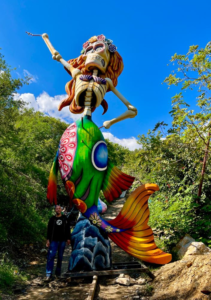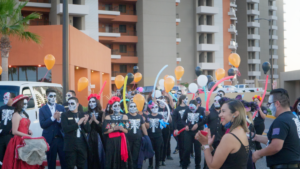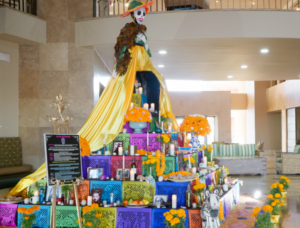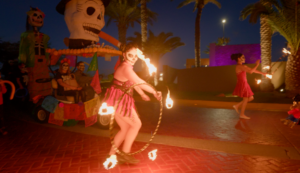 Each fall, among the pumpkins, ghosts, spooky spiders and creative costumes, you may see brightly decorated skulls, candles and bright flowers indicative of Día de Muertos, or Day of the Dead — especially if you live here in the Southwest. Often associated with Halloween because of commonalities like costumes, treats and parades, Día de Muertos is a Mexican holiday celebrating loved ones who have passed away, commemorated every year on November 1 and 2.
Each fall, among the pumpkins, ghosts, spooky spiders and creative costumes, you may see brightly decorated skulls, candles and bright flowers indicative of Día de Muertos, or Day of the Dead — especially if you live here in the Southwest. Often associated with Halloween because of commonalities like costumes, treats and parades, Día de Muertos is a Mexican holiday celebrating loved ones who have passed away, commemorated every year on November 1 and 2.
The holiday originated as an Aztec ritual. They believed that, upon dying, a person traveled to the Land of the Dead by passing through nine challenging levels. In traditions honoring the dead, relatives provided the essentials to help their family members make this years-long, difficult journey.

Back in Europe, pagan rituals honoring the dead included dancing and feasting, and when the Roman Catholic Church took hold, some of these traditions were brought into the celebration of All Saints and All Souls Day. Spaniards, in particular, would bring wine and pan de ánimas (spirit bread) to their loved ones’ graves on All Souls Day, along with candles to light the souls’ way back to their living families.

When the Spaniards arrived in North America, they brought those traditions with them and combined them with the rituals that already existed in Mesoamerica. Today, while Día de Muertos is often associated with Halloween, it is really a celebration of lost loved ones, and the belief that, for this brief period every year, the walls between the spirit world and the living dissolve.
In cities and towns throughout Mexico and in many Mexican American households, families build altars in their homes with photos, favorite foods, colorful flowers, and other offerings (ofrendas) to entice family members to visit. Unlike Halloween decorations, ofrendas are brightly colored and ornate instead of dark and scary.

While historically a rural tradition in Mexico, Day of the Dead has grown in popularity, due in part to its increased visibility in pop culture and the large percentage of people in the United States with Mexican heritage. With Arizona’s proximity to Mexico, particularly Puerto Peñasco (Rocky Point), it’s easy for anyone to take part in the celebration. Resorts like Las Palomas Beach & Golf Resort celebrate with traditional parades, music and parties to honor loved ones who have passed. Events like this are an excellent way to learn about the culture while taking part in the celebration.



You must be logged in to post a comment.